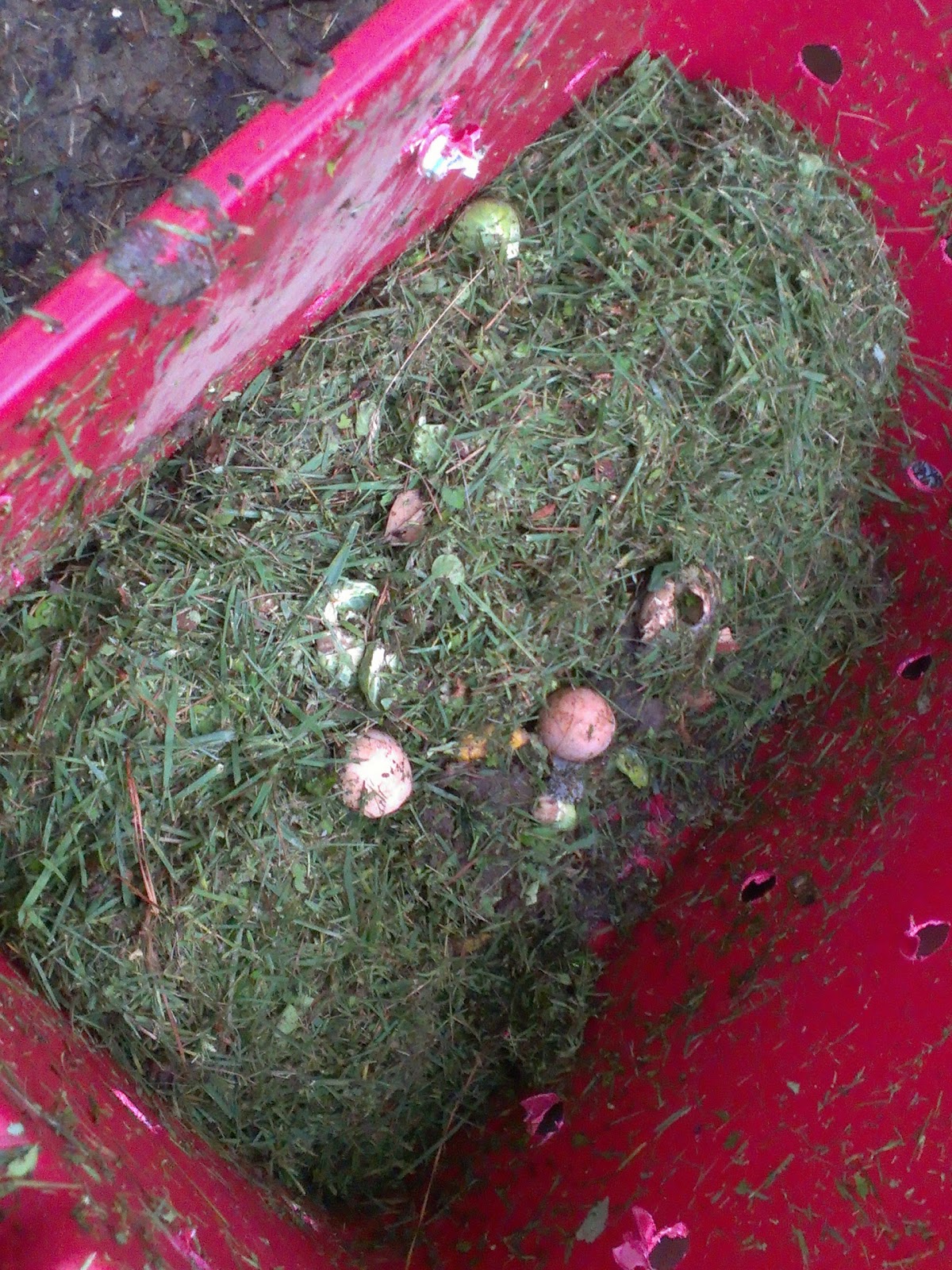Composting is a great way to recycle old items into garden feed. Over time kitchen scraps and other things will decompose and look a lot like dirt. Its pretty amazing.
Here is my original compost pile
Really it's just a big pile of dirt where I would dump my grass clippings. I recently got a really great pitch fork and when I tried to turn the dirt I found that the tree had grown lots of roots into the pile making it pretty useless. Oh well.
It turns out there is a lot of science that takes place in a compost pile. It takes the right amount of wet and dry ingredients plus heat and air flow to break down the waste.
- The active or thermophilic phase - In this phase the material is broken down most rapidly. Aerobic bacteria alter the chemical makeup causing the pile to heat up. This phase can take from 1-4 months depending on conditions.
- The curing or mesophilic phase - After the initial phase the temperatures stabilize and lower. Bacteria that prefer a lower temperature take over the decomposition process and turning of the pile is not needed. At this point the material is not recognizable as its original form. Curing usually takes less than 3 months.
- The maturing phase - In this phase the pile transitions to materials that are less prone to microbial breakdown. If you have a male compost pile maturation may take longer but will eventually occur.
I am trying two things for my compost piles.
For my first I took a plastic bin and drilled holes for aeration and drainage.
This has worked really well as I can role the tub around the yard to mix things up. It also heats in the sun to speed up the process of decomposition.
Here is me throwing a worm into the bin:
Worms and bugs help with the process of breaking down matter. My compost started out like this:
Really just a pile of grass clippings and kitchen waste. After a month or two it looks like this:
You can still make out the egg shells but it now looks like dirt. This is good stuff and will be good for the plants.
I am also trying out another bin. Old paletts are readily available so I took four and joined them:
I am going to start dumping my clippings here and adding leaves and kitchen waste to a proper ratio of wets items and dry items. I have read that a proper ratio is 5 parts dry to 1-2 parts wet.
The pallet should work well as it will provide excellent ventilation and I can dump things in easily. Here is the inside:
I will keep you, my avid readers, updated on the progress of these exciting projects.
Here are some general pictures of the garden this week:
A tall sunflower:
They are growing like crazy.
My son, Edison, pulled this broccoli yesterday while he was helping me weed. I stuck it back in but it doesn't look good:
Some other random pictures:
This tomato doesn't look good. I don't know why.
Mr Bean:
Happy Weeding















1 comment:
all I can say is wow. From start to finish, a stellar update, and well worth the wait. I was on the edge of my seat with those compost pics, and your info on wet to dry ratios was beyond helpful. I cannot wait to start my own compost pile/heap. I am going to use a large storage container and model it after the one in the movie(20 ft by 10 ft should be adequate. You have outdone yourself once again! Keep those updates coming.
Post a Comment